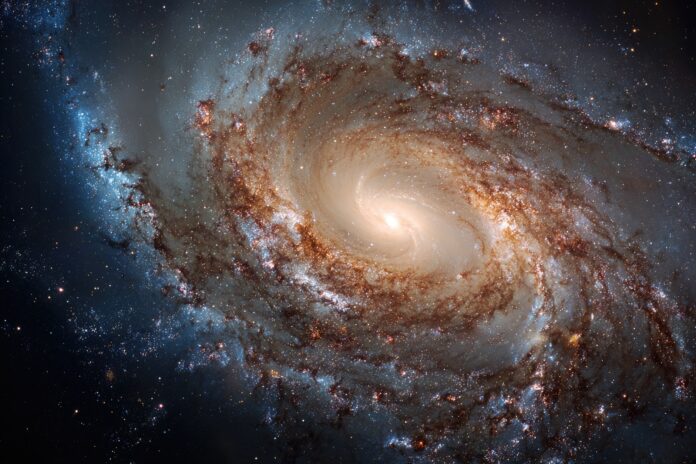Unveiling the Universe: Hubble’s Latest Celestial Marvels
Hubble captures starry spectacle — a phrase that perfectly encapsulates the telescope’s impact in revealing the universe at its most dazzling. In 2025, the NASA/ESA Hubble Space Telescope continues to deliver awe-inspiring images and deepen our understanding of the cosmos. These vibrant vistas of swirling galaxies, glowing nebulae, and intricate star fields not only captivate our imagination but also advance astronomical research.
Galactic Beauty: Spotlight on NGC 5042
Most importantly, Hubble’s recent observations have illuminated the spiral galaxy NGC 5042, situated roughly 48 million light-years away in the constellation Hydra. This celestial portrait showcases the galaxy’s cream-colored core, densely packed with ancient stars, surrounded by striking blue spiral arms dotted with young, hot stars. Besides that, vivid pink gas clouds spread throughout these arms hint at active star formation, while far-off background galaxies pepper the image, offering a window into the distant universe. The multicolored composite was captured using six different wavelength bands, ranging from ultraviolet to infrared, revealing the galaxy’s structure and complexity in unprecedented detail.
Supernova Remnants: The Veil Nebula’s Shimmering Veil
Therefore, Hubble’s gaze extends beyond galaxies to the remnants of massive stellar explosions. Recent images of the famous Veil Nebula — the leftovers of a star which exploded around 10,000 years ago — showcase ethereal filaments of gas shimmering in hues of blue, red, and green. By combining data from hydrogen, sulphur, and oxygen emissions, these images highlight both the beauty and the scientific richness inherent in cosmic debris. Observing the Veil Nebula helps astronomers piece together the life cycles of stars, as well as the recycling of elements essential for planet formation and, eventually, life itself.
A Star Factory in the Small Magellanic Cloud
In addition, Hubble’s latest calendar features a breathtaking view of NGC 602, a young star cluster on the outskirts of the Small Magellanic Cloud. This region teems with newborn stars, intricate gas ridges, and swirling dust, providing astronomers with a live laboratory for studying star birth. Because of the telescope’s pinpoint clarity, even remote stellar nurseries are brought into focus, allowing researchers to trace the evolution of stars from formation to maturity.
Celebrating 35 Years of Cosmic Exploration
Hubble’s legacy continues to grow as it celebrates 35 years in orbit. NASA has highlighted its most spectacular images, sharing one for each year of the observatory’s operation. From expansive cosmic vistas to intimate close-ups of planets and nebulae, these iconic images document not just the diversity of the universe, but also the progress of astronomical discovery over decades. Each new sighting adds a vibrant piece to our cosmic puzzle, making the Hubble Space Telescope one of the most valuable instruments in the history of science.
Why Hubble’s Starry Spectacles Matter
Hubble’s images are more than just mesmerizing photographs — they are data-rich windows into the workings of the cosmos. Astronomers use these visuals to measure galaxy distances, study star formation, and trace the evolution of cosmic structures. Most importantly, public access to these images inspires new generations of scientists, artists, and dreamers to look up and wonder.
Conclusion: The Ongoing Journey
As Hubble continues to scan the skies, each captured spectacle brings us closer to understanding our place in the universe. Its 2025 images reaffirm that, despite decades in orbit, Hubble remains an unparalleled ambassador for astronomy. Every star-studded scene it records is a reminder of the grandeur awaiting us beyond our world.
References
- ESA/Hubble: Picture of the Week 2025
- NASA Science: Hubble Images
- ESA Webb: 2025 Hubble and Webb Calendar
- Phys.org: Hubble Rings in the New Year



